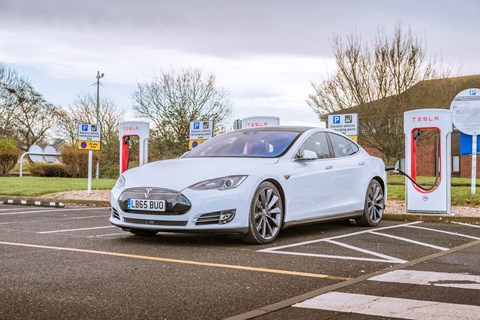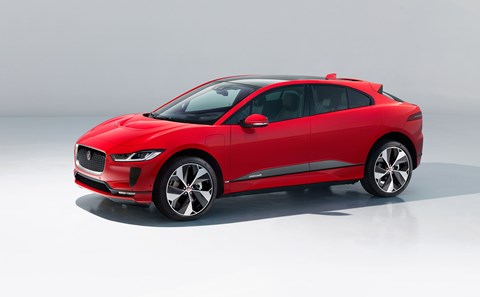► Gavin Green on charging EVs
► The challenges of long-distance driving
► Agree? Sound off in comments below
My electric car adventures began when ‘my’ Tesla Model S on autopilot lane-changed in front of a speeding Transit on the M4 near Heathrow. Robots may not fall asleep, lose concentration or take their eyes off the road. But nor can they compute the irrational behaviour of a White Van Man doing (about) 90mph in a 60 zone.
Earlier, I fast charged at the Tesla Supercharger at a hotel near Heathrow, while ‘enjoying’ a 40-minute coffee break. These Tesla chargers are the most convenient way to charge an electric car away from home. If Renault, Nissan, BMW and the rest had something similar and so pleasingly uniform – no card clash, different cables, various energy providers, odd sockets or incompatible software – there’d be a lot more battery electric cars on the road.
It’s the best way to refuel a car – apart from the old-fashioned petrol pump, of course. And there’s the rub. ‘Fast’ or ‘rapid’ charging at motorway services and superstores (typical time 30-45 minutes) is ‘fast’ in the same way a horse was fast before they invented the motor car. I never thought I’d yearn for a garage forecourt until I started driving EVs far from home.
A few weeks later that is exactly what happened when driving a new ‘long range’ ZE40 Renault Zoe. Now, the Zoe is one of my favourite city cars, perfect for town driving and – like all EVs – so easy to charge overnight at home. But I decided to take the Zoe out of its comfort zone and drove it from London to Salisbury.
Best electric cars: our guide to the finest EVs you can buy

It was fine on the M3, although it’s alarming how quickly your range depletes at 70. The trouble started when I tried to ‘refuel’ it. The first public charger didn’t recognise any of my cards. The next station didn’t work. I rang the Renault dealer to use its quick charger but, sorry, a dealer event was on. In the end I downloaded an app and used a public charger while eating an early dinner, and all was well. Except the whole palaver took ages, while replenishing a normal car would have taken five minutes.
Next up was the new Nissan Leaf, a big improvement on the old one. I could easily live with a Leaf, especially if all my journeys were less than 170 miles, the realistic range. A Sunday journey beckoned to a village near Bristol, 120 miles distant. That’s well within Leaf limits. Unsurprisingly our hosts did not have a fast charger, and trickle charging from their garage would not yield enough juice for our return.
Rapid chargers were identified at Membury services on the M4. On the way home that would be just within range. (A Google search also revealed one was broken.) But did Mrs Green fancy a lengthy coffee break while the Leaf was re-energised? Mrs Green did not. Besides, what happens if all the functional chargers were full on a busy Sunday afternoon?
So the trusty Benz diesel estate was called into action. Incidentally, the Benz drank less than five gallons for the 240-mile journey, reinforcing my belief that for long-distance eco-friendly driving it’s hard to beat a modern fuel-frugal diesel.
How to recharge your electric car: a guide

My electric adventures climaxed when I drove the new Jaguar i-Pace (above). This was a revelation, the most intelligently (and, to my eyes, handsomely) designed electric car of all.
It’s the first EV properly to use the packaging advantages inherent in electric car drivetrains. This gives a distinctive ‘cab forward’ stance, allowing Cayenne-plus space in a Macan-size car. Plus, it’s good to drive. Not just frightening fast from a standing start, like a Tesla in Ludicrous mode. But entertaining through the turns, as winding road and racetrack driving showed. It feels pleasingly analogue and alive, while so many brisk e-cars feel like they’re steered remotely by game console.
Yet long drives still demand careful planning.
Tesla is the only electric car maker to integrate the entire EV user experience, Apple-like. While its Superchargers are as easy to use as charging your iPhone, other EVs offer an away-from-home refuelling experience that’s still too complicated and unresolved. It’s a bit like the old computing days of dial-up modems, incompatible software and insufficient storage.
For years auto makers have offered cars using standard fuel filler necks that run on the same petrol or diesel; oil companies provide standard pumps and easy credit card (now contactless) payments. Why can’t new-generation EVs be so easy?
More opinion pieces by Gavin Green